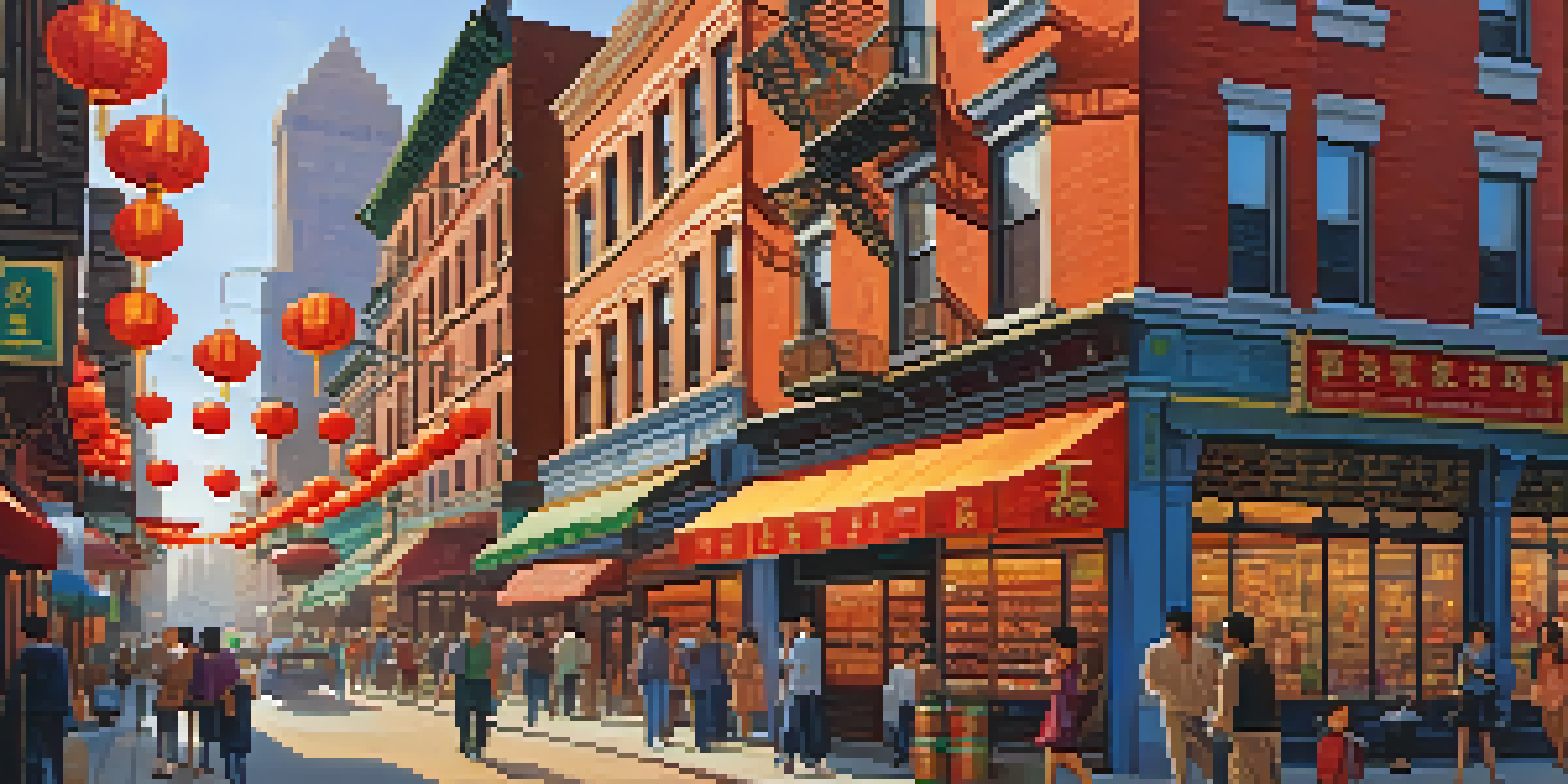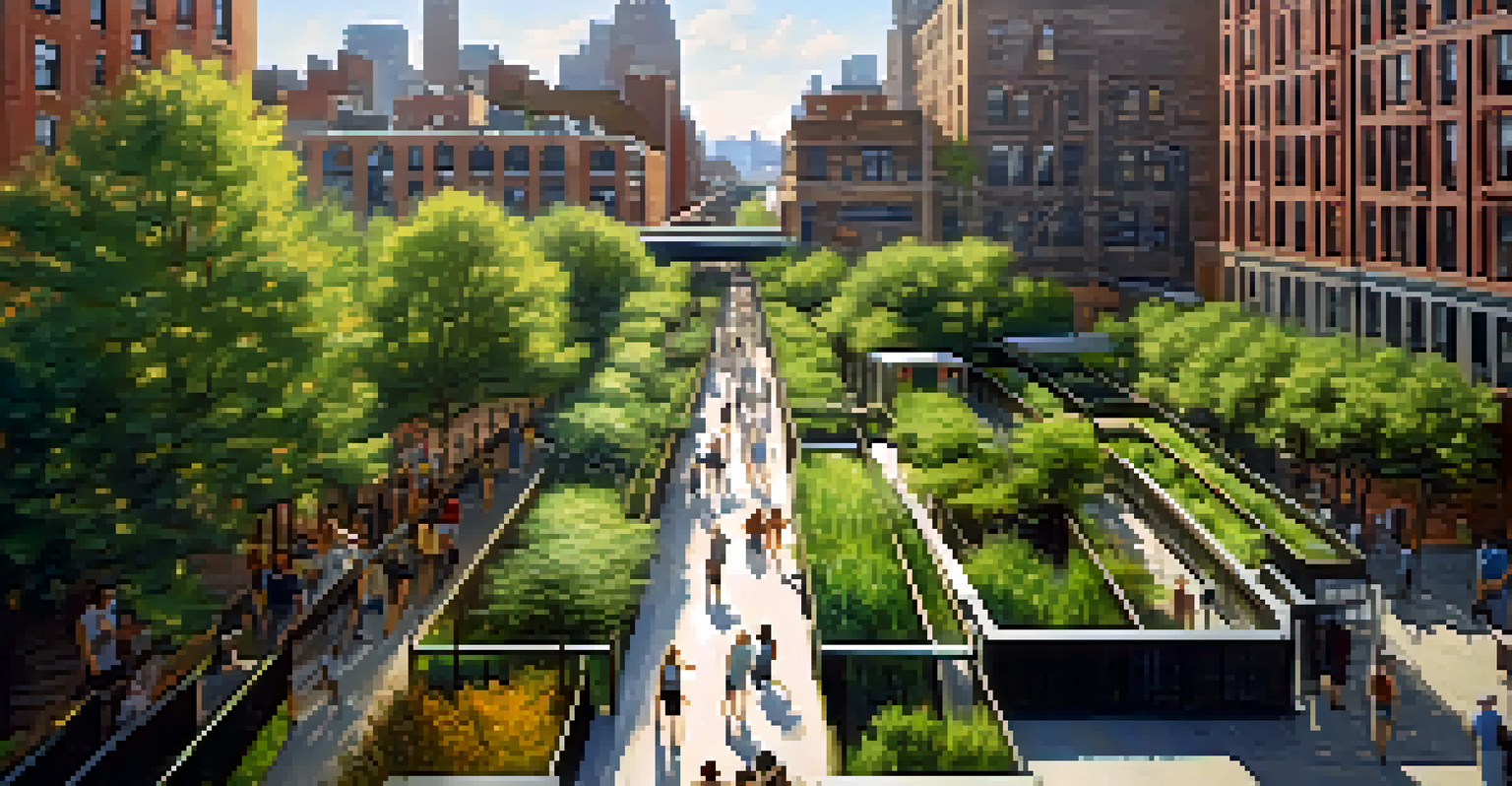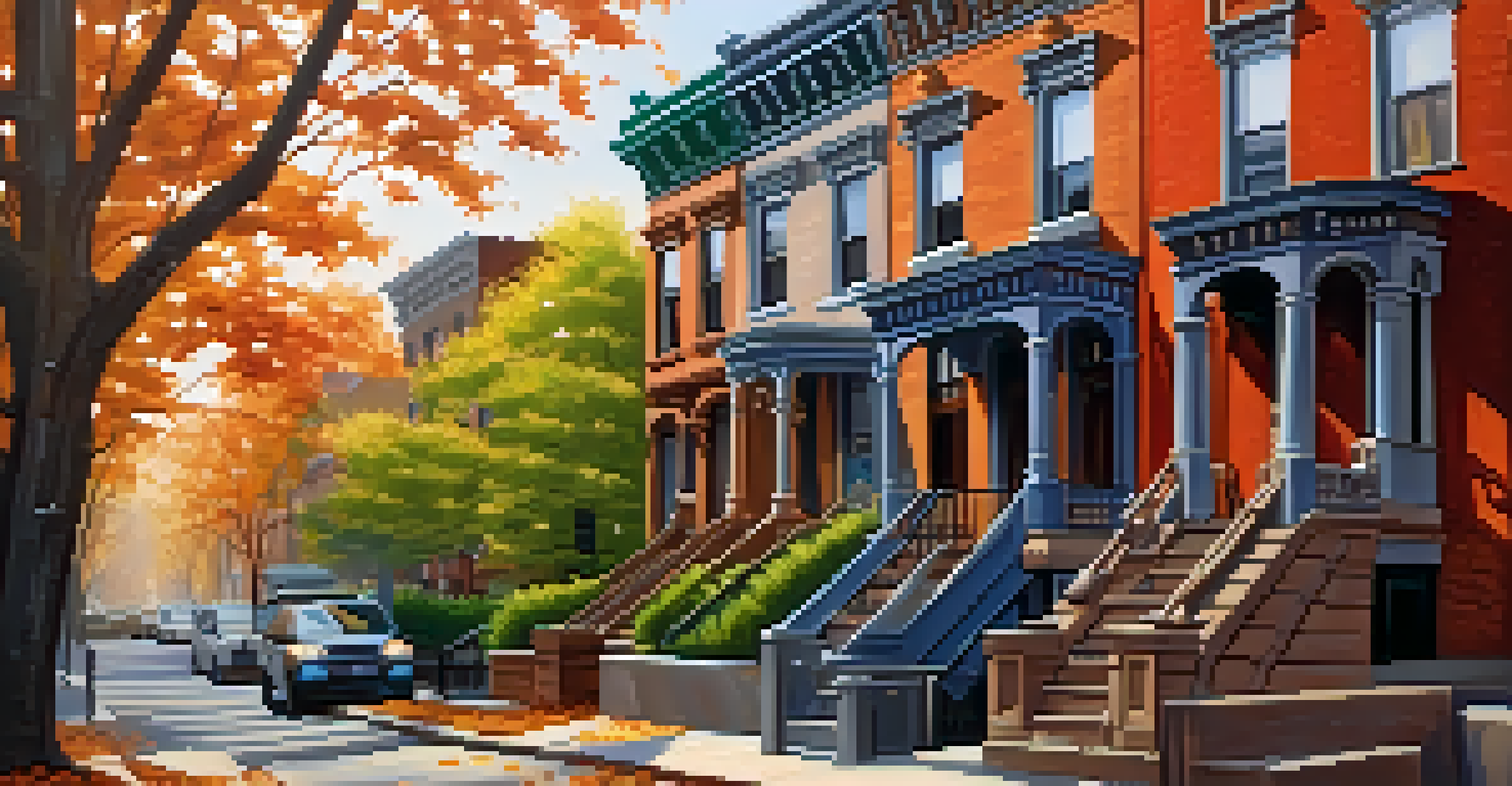Cultural Heritage and Urban Development in New York City

The Rich Tapestry of New York City's Cultural Heritage
New York City is a melting pot of cultures, with a rich history that reflects the diverse backgrounds of its residents. From the iconic Statue of Liberty to the historic neighborhoods of Harlem and Chinatown, these cultural landmarks tell stories of immigration, resilience, and community. Each site not only serves as a tourist attraction but also as a vital part of the city's identity.
New York City is a city of neighborhoods—each with its own rich cultural heritage that tells a story of resilience and community.
The preservation of cultural heritage is crucial as it provides a sense of belonging and continuity for residents. It fosters pride in local communities and helps to maintain unique identities amidst the ever-changing urban landscape. For example, initiatives to protect areas like Little Italy highlight the importance of preserving cultural narratives in the face of modernization.
However, as urban development continues, the challenge lies in balancing growth with the preservation of these cultural sites. The question becomes: how can NYC's development plans incorporate the rich history that makes the city so unique?
Urban Development: A Double-Edged Sword
Urban development in New York City often brings about economic growth and improved infrastructure, but it can also threaten cultural sites. As neighborhoods are revitalized, older buildings and historic areas may be demolished to make way for new constructions, disrupting the cultural fabric of the community. This duality poses a significant challenge for city planners and developers alike.

For instance, the redevelopment of the Lower East Side has led to a surge in luxury apartments, but at what cost? Long-time residents have been displaced, and local businesses that once thrived have struggled to survive. This situation serves as a poignant reminder of the delicate balance between progress and preservation.
Cultural Heritage Shapes Identity
New York City's cultural landmarks reflect the diverse backgrounds of its residents and are essential for fostering a sense of belonging.
The key is to adopt a holistic approach to urban development that honors the past while accommodating future needs. By integrating cultural heritage into development plans, cities can create spaces that resonate with both history and modernity.
Community Involvement in Preservation Efforts
Community involvement is essential in the preservation of cultural heritage in urban environments. Local residents often have the most intimate knowledge of their neighborhoods and can provide valuable insights into what should be preserved. Engaging community voices in development discussions fosters a sense of ownership and responsibility towards cultural sites.
Preserving our cultural heritage is not just about keeping the past alive; it's about building a future that honors our roots.
Organizations like the Historic Districts Council advocate for the protection of neighborhoods throughout NYC, encouraging local residents to participate in preservation efforts. These grassroots initiatives empower communities to take action, ensuring that their cultural heritage is not overlooked during urban planning processes.
When communities come together to advocate for their history, they create a strong foundation for preserving their identities. This collaborative spirit can lead to innovative solutions that respect the past while paving the way for sustainable urban growth.
The Role of Government in Cultural Preservation
Government plays a pivotal role in the preservation of cultural heritage, implementing policies and regulations that protect significant sites. In New York City, agencies like the Landmarks Preservation Commission are tasked with identifying and designating landmarks, ensuring their protection against the pressures of urban development. This governmental oversight is crucial for maintaining the integrity of the city’s historical narrative.
However, the effectiveness of these policies often depends on public support and community engagement. When residents advocate for their neighborhoods, it reinforces the need for government action and can lead to more robust preservation initiatives. This partnership between government bodies and local communities strengthens the preservation mission.
Balancing Growth and Preservation
Urban development in NYC poses challenges to cultural sites, highlighting the need for a careful approach that honors history while accommodating growth.
Ultimately, a proactive approach from the government can help bridge the gap between urban development and cultural heritage, creating a framework that values both progress and history.
Case Studies: Successful Integrations of Heritage and Development
Examining successful case studies can provide valuable insights into how cultural heritage and urban development can coexist. One notable example is the High Line, a former elevated railway transformed into a public park. This innovative project not only revitalized the surrounding area but also incorporated art installations and historical markers that celebrate the city’s industrial heritage.
Another example is the restoration of the Tenement Museum, which offers visitors a glimpse into the lives of immigrants in the late 19th and early 20th centuries. By preserving these historical sites, NYC not only maintains its cultural narrative but also attracts tourism, illustrating how heritage can contribute to economic development.
These examples highlight the potential for thoughtful urban development that respects and honors cultural heritage. By learning from such initiatives, city planners can develop strategies that celebrate history while embracing modern needs.
The Future of Cultural Heritage in Urban Development
As New York City continues to evolve, the future of its cultural heritage will largely depend on how urban development is approached. Embracing a model that prioritizes sustainability and inclusivity can create spaces that honor the past while accommodating growth. This vision requires collaboration among stakeholders, including residents, developers, and government entities.
Innovative technologies and smart city planning can also enhance the preservation of cultural heritage. For instance, augmented reality could provide virtual tours of historic sites, allowing residents and tourists alike to engage with the city’s history in new ways. This fusion of technology and tradition can foster a deeper appreciation for cultural heritage.
Community Engagement is Vital
Involving local residents in preservation efforts empowers communities to protect their cultural heritage amidst urban planning changes.
Ultimately, the future of cultural heritage in urban development rests on the recognition that both can thrive together. By prioritizing thoughtful planning and community engagement, New York City can become a model for other urban centers navigating similar challenges.
Conclusion: A Harmonious Balance for NYC
In conclusion, the interplay between cultural heritage and urban development in New York City is a complex but essential dialogue. As the city grows, it will be crucial to strike a balance that preserves its rich history while accommodating modern needs. This journey requires commitment, collaboration, and a shared vision for the future.
By valuing cultural heritage and integrating it into urban development strategies, NYC can continue to thrive as a vibrant, diverse metropolis. The stories of its neighborhoods and the voices of its residents should guide the way forward, ensuring that the past is honored amidst the inevitable changes.

As we look to the future, let’s remember that a city’s true strength lies in its ability to celebrate its heritage while embracing growth. Only then can New York City remain a dynamic and inclusive place for generations to come.